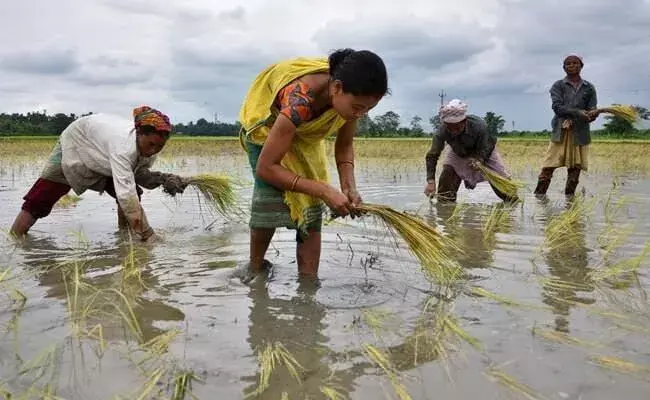Heavy Rains Threaten Food Supply, Dams
Dams and Reservoirs may be already almost full, and it may be difficult for them to absorb further heavy inflows

Exceptionally heavy continuous rain has been experienced in several parts of India in early October, at a time when the Monsoon season is normally considered to be over. Such abnormal weather is not rare in times of climate change, and we need to be careful in several contexts to minimise harm.
In particular we need to be careful in matters of dam management. As dam reservoirs may be already almost full from rains up to September, it is likely to be difficult for them to absorb further heavy inflows. Hence, we are likely to have a situation in the context of several dams where careful management is needed to minimise any potential harm from floods.
Several other aspects of the situation arising from late excessive rains also deserve attention. Many crops which are ready, or getting ready for harvest, have suffered much harm. Farmers whose harvested crop is still in open fields will suffer the most.
In the case of some standing paddy crops, rains can delay harvesting time. This further shortens the gap between paddy harvesting and wheat sowing in states like Punjab, thereby also increasing the possibility of stubble burning.
The food supply will be hurt most by loss to rice crop, and in addition supply of several pulses and oilseeds will also suffer. The rice crop in several parts suffered earlier due to late arrival of rains, which also led to lowering of yield.
The produce farmers have already brought to the mandis (wholesale markets), where safe covered storage may be limited, can be damaged. This is a highly distressing situation for farmers who toiled so hard to produce the crop and bring it to the market.
Cultivation of vegetables in several parts will be adversely affected, particularly of the more tender crops. Several hilly areas may experience more harm in this context.
The already serious shortage of fodder will be accentuated in some parts of the country, and later supply of oil cakes will be affected too. This will adversely affect dairying activities, particularly the smaller dairy farmers who are already in a difficult situation.
Apart from heavy rains in October damaging standing or just harvested crops, these late rains can also delay the rabi or winter crop. In particular there will be anxiety regarding the wheat crop as the area of its more bountiful growth in North India has suffered from much excessive rain in early October.
Significant damage of crops by late rains can also reduce the capacity of farmers to invest adequately in rabi crops, or even to meet some essential expenses. This would come on top of the already rising price of fertilisers and difficulty in accessing these.
However, the government has provided a much lower budget for food and fertiliser subsidy during the financial year 2022-23. These difficulties provide additional reason for expediting crop insurance claims of farmers.
Recent reports, particularly from Haryana, suggest increasing problems faced by farmers in meeting insurance claims. This needs substantial improvement. As it is, there is only partial coverage for farmers at national level and if on top of this there are serious problems in processing claims, crop insurance will not be able to get better acceptance among farmers.
Heavy October rains may make it more difficult to organise certain NREGA works for some time. This is all the more reason for ensuring that all pending dues of NREGA workers are cleared as soon as possible.
As the earth is already moist from rains up to September, its capacity to absorb more water is limited. This is also true of ponds and tanks which may already be full in many villages. Hence heavy rains in October can easily lead to floods and/or waterlogging. In fact October floods have already been reported from parts of Bihar.
What may prove even more dangerous is excessive release of water from dams, as pointed out earlier. Several parts of the 'terai-bhabar' areas (areas below the Himalayan region) may be particularly vulnerable to this, as also parts of Punjab, the most productive food grain state. Hence dam management should particularly receive careful attention during these days, so that any possibility of flash floods can be minimised, if not avoided altogether.
There have been several deaths, around 18 have been reported so far, from the collapse of walls and similar kinds of accidents. There should be more caution regarding this. In hilly areas, landslides have increased significantly at a time when better conditions were expected. This has led to disruptions and harm from landslides becoming more prolonged, re-emphasising once more the urgent need to reduce the ever increasing threat from landslides in the Himalayan region, Western Ghats and other hilly areas.
Bharat Dogra is Honorary Convener, Campaign to Save Earth Now.



